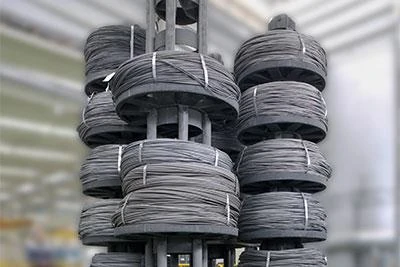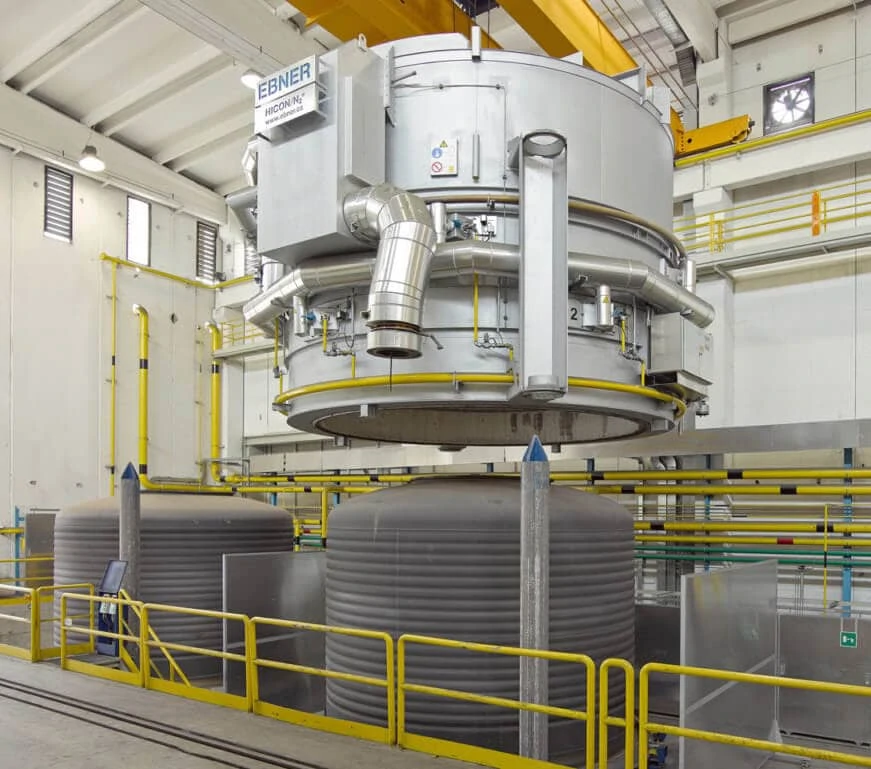SAIP wire or Spherodized annealed in process (SAIP) wire is a material that undergoes spheroidized annealing throughout the entire length of the wire. This allows for uniform stress throughout the wire, which provides the lowest possible internal stress.

Before we go more into details about SAIP, it’s import to understand what is annealing.
Annealing is a heat treatment process that affects the crystalline structure of a material and allows it to be “softened” or heated to a temperature below its melting point. The purpose of annealing is to remove internal strain in the crystal structure as well as improve its ductility, toughness and strength by minimizing grain boundaries. Annealability can be improved with annealing but not corrected for when forming parts like hardening or heat treatment. Annealing is performed in an inert environment and thus does not involve any chemical reactions.
When material is cooled from a hot state to a cold state there are different crystal structures that the atoms will form in. If cooling occurs more quickly, the atoms will be closer together, creating a more densely packed structure and crystal structure called austenite (denoted as ‘a’). If cooled more slowly, the atoms will have more time to move and create a less densely packed structure and crystal structure called ferrite (‘f’). These two different crystal structures are impossible to mix within the material; they are mutually exclusive and this is called a phase boundary. How long cooling takes will affect where the phase boundary is located.
While annealing, the furnace should be heated up to austenitizing temperature and held for a certain time period. Different types of annealers use different temperatures and times. Typical austenitizing temperature is around 900°C (1400°F). Typical annealing times can be between 2 to 10 hours for milder stresses or between 100 to 1000 hours for more severe stresses. The key to the process is keeping the material above the phase boundary exposure. Heating should be performed slowly and carefully throughout the entire part.

Spheroidizing is a process of annealing that causes the grain size to become smaller during the process. Spheroidizing also improves the grain boundaries so they become smoother and more rounded. Since the grain sizes are smaller, there is less internal strain and thus provides better ductility. Spheroidized annealed are typically performed near or above room temperature which helps to minimize distortion of parts during the process. As a result of spheroidization, the grains are also better able to absorb mechanical strain which reduces internal stress and makes the material more ductile. This is advantageous for manufacturing processes that involve bending or extruding a part from the original metal stock.
Since spheroidized annealing minimizes distortion and improves ductility, parts made using this process are more than twice as strong as parts made using conventional straight line cooling. The spheroidized process is recommended for high strain, low fatigue applications involving bending and extrusion.
The spheroidized process is more than twice as strong as conventional straight line cooling. Spheroidization significantly reduces distortion. Ductility and shatter resistance is also improved. Parts are easier to machine and draw. Reduced distortion in fabrication operations increases yield of parts being manufactured and reduces scrap rate.
Spherodized annealed in process (SAP) wire is a material that undergoes spheroidized annealing throughout the entire length of the wire. This allows for uniform stress throughout the wire, which provides the lowest possible internal stress. Because of this, SAP wires have a higher yield strength when compared to conventional non-annealed materials and low elongation to break and excellent fracture toughness. SAP wires do have higher cross sectional area and lower density than conventional non-annealed materials, but this should not be an issue for most applications for which SAIP is used.
SAIP wire can be made from a variety of materials and sizes, depending on the application. The outer coating of the wire is generally made from a regular rod coating such as nickel or chrome. Because of its high ductility, SAP wire can be used in a variety of ways. It is commonly used with springs, automotive components, fasteners, bearings, electrical contacts and as an inner layer for materials such as spring steel bars or rods. It is also used for fasteners and valves.
SAIP wire can be made by adjusting the cooling rate of conventional straight line cooled wires. The cooling rate must be slower than conventional straight line cooled wires, but faster than annealing. The process of spheroidizing the material can be done during the manufacturing process or afterwards. Since SAIP wire is annealed during the manufacture of a part, it can be infused into a part at different levels in order to optimize its properties.
Syscon way of annealing
Annealing creates micro-cracks in the steel during the process that weaken it and inhibit subsequent hardening. However, annealing also improves the ductility of the steel and is necessary for many manufacturing processes.
Annealing, when done properly, helps relieve internal stress and grain boundary strain in metals that are being processed. Annealing can also provide a material with improved ductility and hardness at the same time. Annealing is typically used when a material needs to bend by very small amounts, needs to be drawn into a channel, or when annealed materials are being processed in a large amount.
Annealing is not recommended for products that will undergo severe loads and are pulled through a press or that are extruded at high speeds.
Annealing is commonly used in making raw material for springs and fasteners and wire used in the manufacture of springs.
Without annealing, steel would become very brittle and unable to bend by more than a few millimeters.
Many of the above stated advantages make spheroidized annealing a good choice for applications that involve high strain, low fatigue. The process is not recommended for high stress parts that require high strength and hardness.
Copyright © 2024. All rights reserved. Syscon Wires Pvt. Ltd.
Desiged by XENRION